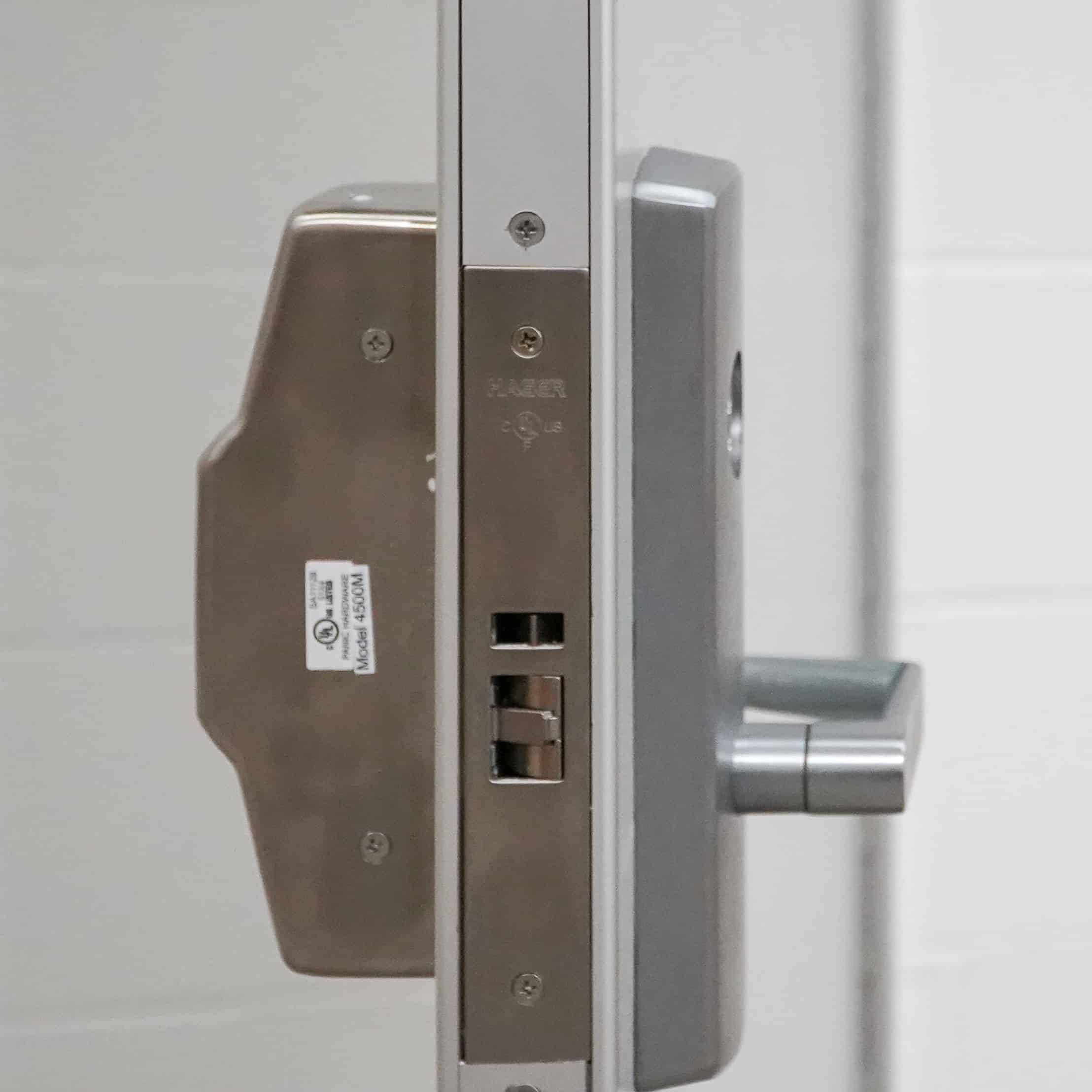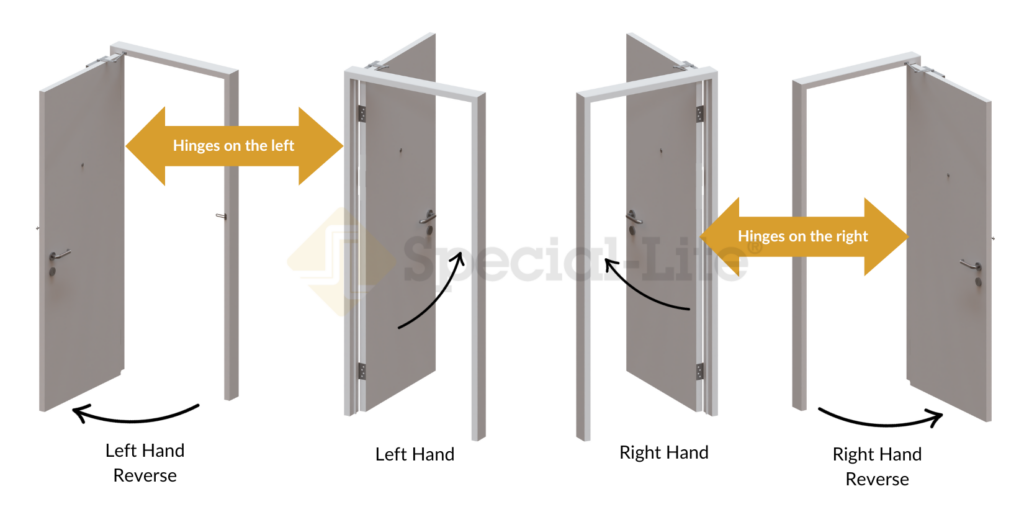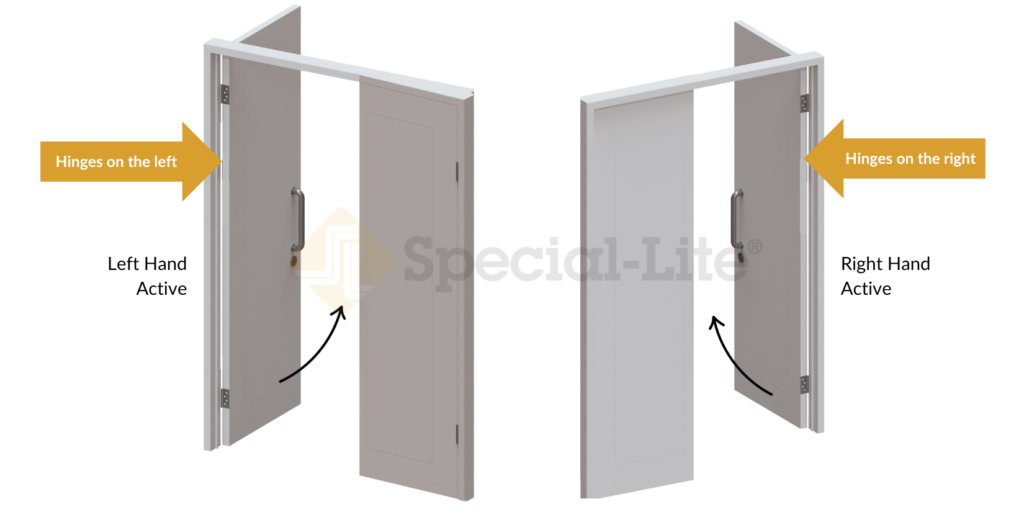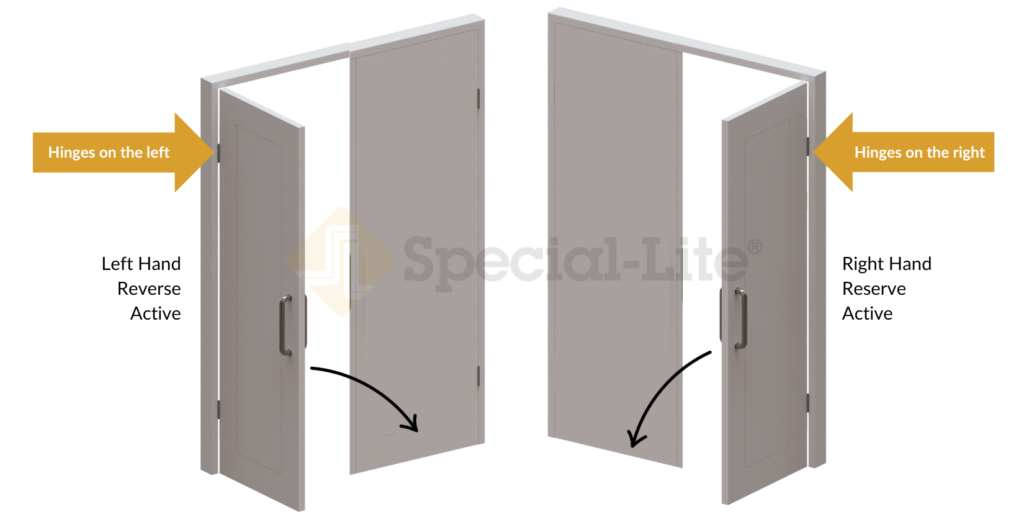
How to Determine Door Handing: A Comprehensive Guide
Door handing is crucial in architecture, construction, and interior design. Understanding how door handing works is essential for proper installation, functionality, and aesthetics, not to mention helping ensure your commercial door order is built correctly and your project remains on schedule. Below, we’ll explain what handing is, why it matters, and how to determine the handing of a single and double door.
What is Door Handing?
Door handing refers to the direction in which a door swings open or closes relative to the person outside. It is a fundamental aspect of door design and installation that affects not only the door’s appearance but also its functionality and safety.
Why Does Door Handing Matter?
1. Safety: Proper door handing ensures that doors open in a way that doesn’t obstruct or endanger individuals using the space. It also plays a significant role in emergencies, affecting your ability to quickly exit a building.
2. Aesthetics: Door handing impacts a space’s look and feel. It can affect the flow of a room and how furniture or equipment is arranged.
3. Functionality: A door’s handing influences a space’s convenience and ease of use. A door that opens in the wrong direction can be frustrating and impractical.
4. Building Codes: Many building codes and regulations specify the correct handing for doors in various locations within a structure. Compliance with these codes is crucial for safety and compliance. Always consult your local codes.

How to Determine Door Handing
To determine a single door’s handing, you need to consider two key factors:
1. The Hinge Location: Stand outside the room or building (secure side) and look at the side where the hinges are located. If the hinges are on the left, it’s a left hand door; if they are on the right, it’s a right hand door.
2. The Door Swing Direction: Now, consider the direction in which the door swings open when you pull or push it. If the door opens towards you, it’s an “inswing” door. It’s an “outswing” door if it opens away from you.
Once you’ve established these factors, you can identify the handing of the door:
Left Hand: The hinges are on the left, and the door swings into the room.
Right Hand: The hinges are on the right, and the door swings into the room.
Left Hand Reverse: The hinges are on the left, and the door swings out of the room.
Right Hand Reverse: The hinges are on the right, and the door swings out of the room.
It’s important to note that interior and exterior doors may have different handings, so always consider the context and location of the door when determining handing.
Double Doors: Handing and Configuration
In addition to single doors, double doors are common in commercial spaces. These pairs of doors provide a wider opening and are often used in entrances, hallways, or areas with high traffic. When it comes to double doors, understanding handing and configuration is essential to ensure they operate smoothly and meet safety standards.


Determining Handing for Double Doors
Determining the handing of each door in a double-door configuration is like what we discussed above for single doors. Still, it becomes slightly more complex due to the presence of another door. Here’s how to determine the handing for each door in a double-door setup:
1. Hinge Location: Stand outside the room and look at the side of the door frame where the hinges are located for each door. For example, if the left door has hinges on the left side of the frame, it’s a left-hand door. Conversely, if the right door has its hinges on the right side of the frame, it’s a right-hand door.
2. Direction of Door Swing: Examine the direction in which each door swings open when pulled or pushed. You have a “double inswing” configuration if both doors swing into the room. If both doors swing out of the room, it’s a “double outswing” configuration. If one door swings in while the other swings out, you have a “paired door” configuration, with one inswing and one outswing.
3. Active and Inactive Door: In most double door setups, one of the doors or leaves is active, primarily used for entry and exit. The other door or leaf is inactive and typically secured with flush bolts and astragal hardware when not in use. Determining which door is active is crucial for proper installation.
Active Door: The active door you use most frequently. If you stand outside the room and pull or push one door to enter, that’s the active door.
Inactive Door: The inactive door is usually the one that remains closed when not in use. Securing the inactive door is vital to prevent drafts, maintain energy efficiency, and ensure security.
Once you’ve established these three factors, you can identify the handing of the door:
Left Hand Active: The hinges are on the left, and the door swings into the room.
Right Hand Active: The hinges are on the right, and the door swings into the room.
Left Hand Reverse Active: The hinges are on the left, and the door swings out of the room.
Right Hand Reverse Active: The hinges are on the right, and the door swings out of the room.
Why It Matters
Understanding how to determine a door’s handing based on hinge location and the direction of the door swing is essential for specifying, ordering, and properly installing a commercial door, not to mention building code compliance. Whether renovating an existing space or working on a new commercial building, download our door handing chart for reference.
Still have questions? Our Customer Service Team is always ready to help. Contact them now. Or you can contact your local Special-Lite Sales Rep for assistance. Either way, Special-Lite has you covered.